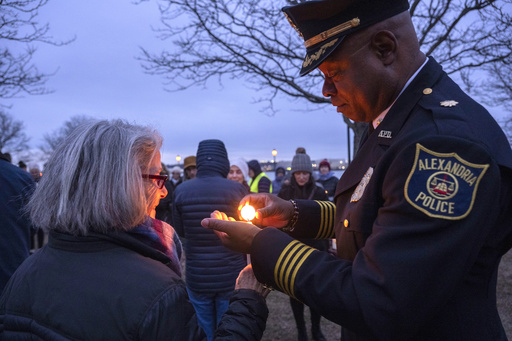Investigators from the National Transportation Safety Board (NTSB) are analyzing critical miscommunications inside the cockpit of a U.S. Army Black Hawk helicopter just moments before its fatal collision with an American Airlines jet last month.
The tragedy, which unfolded over the Potomac River near Ronald Reagan National Airport on January 29, claimed the lives of all 67 people on board both aircraft.
What Went Wrong?
The American Airlines regional jet, arriving from Wichita, Kansas, was making its final descent after being redirected from Runway 1 to the lesser-used Runway 33. Meanwhile, the Black Hawk was on a routine training mission, allowing the pilot to complete an annual evaluation flight.

During a press conference, NTSB Chair Jennifer Homendy detailed two key moments where the Black Hawk crew may have missed or misinterpreted air traffic control instructions.
Missing a Critical Warning
One issue involved the helicopter crew potentially not hearing the controller’s warning that the American Airlines jet was “circling” to switch runways. Although investigators confirmed the word was present in the air traffic control recording, it was missing from the Black Hawk’s cockpit voice recorder—raising concerns that the crew never received that vital piece of information.
Confused Directions Seconds Before Impact
Another miscommunication occurred when the air traffic controller instructed the Black Hawk to pass behind the approaching jet. However, due to a brief 0.8-second microphone key depression, part of the instruction may have been “stepped on” and never heard by the crew.
Instead of moving behind the plane, Chief Warrant Officer Andrew Eaves, the instructor pilot, mistakenly told Captain Rebecca M. Lobach to head toward the river’s east bank—an incorrect interpretation of the controller’s directive.
Altitude Discrepancies Add to Mystery
Beyond communication breakdowns, NTSB officials are also investigating inconsistencies in the Black Hawk’s altitude readings. The helicopter was supposed to remain at a maximum height of 200 feet above the river but appeared to be at 300 feet when the collision occurred.
Adding to the confusion, the cockpit voice recorder revealed that Eaves and Lobach gave conflicting altitude reports. At 8:43 p.m., when the helicopter was west of the Key Bridge, Captain Lobach stated they were at 300 feet, while Eaves reported 400 feet. Neither pilot acknowledged or corrected the discrepancy.
Two minutes later, as the Black Hawk passed over Memorial Bridge, Eaves told Lobach they needed to descend to 200 feet. She confirmed they would—but for unknown reasons, the helicopter never reached that altitude before the crash.
What Happens Next?
The NTSB is now working to determine the full extent of how these miscommunications contributed to the disaster. The agency is also examining potential altitude sensor issues and whether cockpit procedures need to be reevaluated to prevent similar tragedies.
With so many unanswered questions, one thing is clear: a series of small but crucial missteps turned an ordinary flight operation into a catastrophic midair collision.